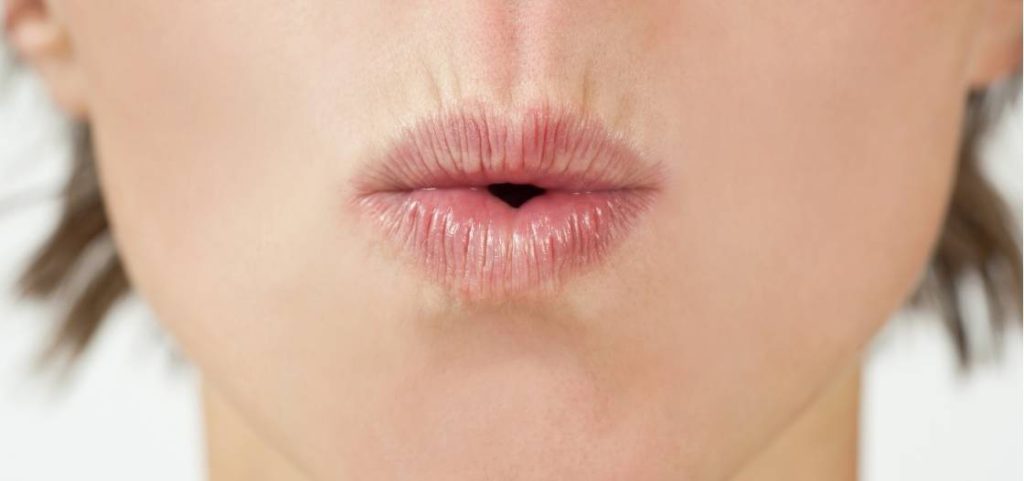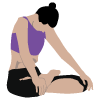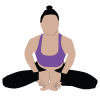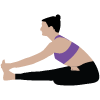>>Download Yoga Mudras Free PDF!
Welcome to the world of yoga mudra, where the subtle language of the body takes center stage. In this article, we uncover the significance of mudras – yoga gestures that go beyond mere movements. These silent expressions, used during meditation, asanas, and pranayamas, hold the power to shape our mental state and enhance our well-being.
Mudras, in their simplicity, become a key to improving the connection between mind and body. From promoting a calming state of mind to addressing various health conditions, practicing some mudras everyday offer a unique path to physical and mental healing.
In this comprehensive guide on yoga mudras, we unravel the meanings and benefits of these simple yet powerful gestures. We will see different types of yoga mudras which are not limited merely to hand gesture but also involve eyes, tongue, ear or even whole body. We will also understand the working of mudras and their scientific aspect.
In nutshell, mudras not just about hand gesture; it’s about understanding the language your subtle body speak in the realm of yoga. Let’s explore together.
What are mudras in yoga?

In yoga, a mudra isn’t just a hand gesture; it’s like a symbol that connects to your inner feelings. Symbols show ideas visually, and mudras are like lively yoga symbols expressing different feelings inside you.
For instance, consider the “Anjali Mudra,” where you bring your palms together in a prayer-like gesture. This mudra symbolizes respect, gratitude, and the unity of opposites. When you perform the Anjali Mudra, it’s not just a hand movement; it’s like activating a symbol that brings forth a sense of reverence and connection within your yoga practice. Much like how the heart symbol instantly triggers thoughts of love, a mudra symbol can evoke specific feelings and states of consciousness during your yoga journey.
Think of mudras as special hand movements in yoga. They don’t just make your body move; they also boost the energy flowing inside you. The word “mudra” means more than just a movement – it’s like sealing in energy. It helps keep the energy inside you, making your mind and body work together better.
So, doing mudras isn’t just about moving your hands; it’s like creating a seal for your energy. This helps you concentrate during yoga and can even make your body and mind feel better, helping with both physical and mental health.
Meaning and significance
Mudra, from the Sanskrit phrase “Mudam anandam dadati iti mudra,” translates to actions that bring pleasure or bliss. According to the ancient tantric text, “Kularnava Tantra,” Sanskrit word ‘mudra’ comes from ‘mudam’ meaning ‘bliss’ and ‘drava’ meaning ‘to draw forth.’ This suggests that mudras possess the unique ability to draw out the hidden joy within us.
Engaging in a mudra directs the flow of Prana, or life force, in a rhythmic manner. The longer we maintain the mudra, the smoother the prana flow becomes. This rhythmic flow induces a shift in consciousness, fostering a serene state of mind.
While yoga harnesses mudras for therapeutic purposes, these hand gestures extend beyond to traditions like Hinduism, Buddhism, and Jainism. In these traditions, mudras play roles in classical rituals, folk dances, and mantra chanting, revealing their multifaceted nature that combines artistry with profound meaning.
How many types of mudras are in yoga?

Yoga Mudras FREE PDF Link
In yoga, there are five types of mudras, each categorized by the body parts involved in creating the gesture. The most commonly practiced ones are hand mudras, known as “hasta mudra.”
Hasta Mudra (Hand Gestures): Executed using hands and fingers.
Kaya Mudra (Postural Gestures): Encompasses the entire body.
Mana Mudra (Head Gestures): Engages sense organs such as eyes, nose, tongue, lips, and ears.
Bandha Mudra (Lock Gestures): Utilizes three bandhas, specifically subtle skeletal muscles like vocal, respiratory, and pelvis.
Adhara Mudra (Perineal Gestures): Involves the muscles of the pelvis.
Let’s explore each of these types of mudra one by one;
1. Hand mudras

Hand mudras take precedence among various types, finding significant application in meditation and pranayama. Rooted in the five elements theory, these mudras are renowned for their therapeutic advantages.
In the practice of hand mudras, diverse gestures are formed using a combination of fingers, and practitioners often hold them for extended periods. The ensuing list delineates various hand mudras, each carrying distinct meanings and associated benefits.
*Scroll the table horizontally to see mudra pictures and benefits
 Index fingertip joins thumb, palm upwards. Rest three fingers extended.Enhances memory, and concentration. Gives a sense of security, and groundedness.2.Apana Mudra
Index fingertip joins thumb, palm upwards. Rest three fingers extended.Enhances memory, and concentration. Gives a sense of security, and groundedness.2.Apana Mudra Middle and ring fingertips join thumb. Rest two fingers extended.Helpful in diabetes and constipation. Strengthens leg joints3.Prana Mudra
Middle and ring fingertips join thumb. Rest two fingers extended.Helpful in diabetes and constipation. Strengthens leg joints3.Prana Mudra  Ring and little fingertips join thumb. Rest two fingers extended.Prevents hair fall and Increases lung efficiency.4.Surya Mudra
Ring and little fingertips join thumb. Rest two fingers extended.Prevents hair fall and Increases lung efficiency.4.Surya Mudra Thumb pressing on second phalanx of ring finger and ring fingertip touches the base of thumb. Rest three fingers extended.Panacea mudra for weight loss, maintain metabolism and reduce Cholesterol.5.Varun Mudra
Thumb pressing on second phalanx of ring finger and ring fingertip touches the base of thumb. Rest three fingers extended.Panacea mudra for weight loss, maintain metabolism and reduce Cholesterol.5.Varun Mudra Thumb joins little fingertip. Rest three fingers extended.Helpful in dehydration, clears blood and glows skin.6.Back Mudra
Thumb joins little fingertip. Rest three fingers extended.Helpful in dehydration, clears blood and glows skin.6.Back Mudra Right hand – Thumb touches middle and ring fingerLeft hand – Thumb touches index fingerRelieves back pain and muscle cramps.7.Apana Vayu Mudra
Right hand – Thumb touches middle and ring fingerLeft hand – Thumb touches index fingerRelieves back pain and muscle cramps.7.Apana Vayu Mudra Thumb joins middle and ring fingertip while index finger bend to the base of thumb.Best mudra for heart problems, prevents heart attack and improves digestion.8.Shunya Mudra
Thumb joins middle and ring fingertip while index finger bend to the base of thumb.Best mudra for heart problems, prevents heart attack and improves digestion.8.Shunya Mudra Thumb pressing second phalanx of middle finger. Rest three fingers extendedTreat ear-related problems, cure numbness and motion sickness.9.Rudra Mudra
Thumb pressing second phalanx of middle finger. Rest three fingers extendedTreat ear-related problems, cure numbness and motion sickness.9.Rudra Mudra Thumb touching tip of ring and index fingers. Rest two fingers extended.Cure of dizziness, lowers blood pressure and burn belly fat.10.Adi Mudra
Thumb touching tip of ring and index fingers. Rest two fingers extended.Cure of dizziness, lowers blood pressure and burn belly fat.10.Adi Mudra Thumb fold inside the curled fingers.Increase oxygen flow in blood, gives mental clarity11.Linga Mudra
Thumb fold inside the curled fingers.Increase oxygen flow in blood, gives mental clarity11.Linga Mudra Both hands fingers clasped and left thumb is erectCures breathing disorders, Prevent hypothermia12.Anjali Mudra
Both hands fingers clasped and left thumb is erectCures breathing disorders, Prevent hypothermia12.Anjali Mudra Both hands finger align in front of each other, tip upwardBalance left and right hemisphere, improves focus.14.Akash Mudra
Both hands finger align in front of each other, tip upwardBalance left and right hemisphere, improves focus.14.Akash Mudra Thumb touches tip of middle finger. Rest three fingers extended.Helpful in migraine, hearing loss, and overcome calcium deficiency.15.Padma Mudra
Thumb touches tip of middle finger. Rest three fingers extended.Helpful in migraine, hearing loss, and overcome calcium deficiency.15.Padma Mudra Little finger and thumb touches side-by-side then spread all fingers in a circular direction.Brings creativity, calms the anxious mind, and balances heart chakra.16.Ganesha Mudra
Little finger and thumb touches side-by-side then spread all fingers in a circular direction.Brings creativity, calms the anxious mind, and balances heart chakra.16.Ganesha Mudra Right hand back, left hand forward – interlock fingers at second phalanx from inside.Increase lung capacity, reduce neck pain, and boost self-confidence.17.Matangi Mudra
Right hand back, left hand forward – interlock fingers at second phalanx from inside.Increase lung capacity, reduce neck pain, and boost self-confidence.17.Matangi Mudra Interlace both hand fingers and then point both middle fingers up.Evoke self-confidence, helps in insomnia and relax jaw muscles.18.Dharmachakra Mudra
Interlace both hand fingers and then point both middle fingers up.Evoke self-confidence, helps in insomnia and relax jaw muscles.18.Dharmachakra Mudra Make gyan mudra with both hands. Now touch right gyan mudra with left middle fingertip facing outside.Deepen meditation, gives grounding sense, and calms the mind.19.Brahma Mudra
Make gyan mudra with both hands. Now touch right gyan mudra with left middle fingertip facing outside.Deepen meditation, gives grounding sense, and calms the mind.19.Brahma Mudra Fold thumb inside curl fingers then press fingers at knuckles.Balance thyroid gland secretion, helpful in irregular menstrual cycle.20.Vajra Mudra
Fold thumb inside curl fingers then press fingers at knuckles.Balance thyroid gland secretion, helpful in irregular menstrual cycle.20.Vajra Mudra Middle, ring and little fingertips touches thumb. Index finger extended.Removes stiffness of muscles, detoxes the lungs.21.Surabhi Mudra
Middle, ring and little fingertips touches thumb. Index finger extended.Removes stiffness of muscles, detoxes the lungs.21.Surabhi Mudra Ring fingertips of both hand touches opposite little fingertips, and in same manner, middle fingertips touches opposite index fingertipsEnhances creativity and helpful in getting wish fulfillment.22.Bhumisparsha Mudra
Ring fingertips of both hand touches opposite little fingertips, and in same manner, middle fingertips touches opposite index fingertipsEnhances creativity and helpful in getting wish fulfillment.22.Bhumisparsha Mudra Left hand on lap facing upward, and the right hand points to the ground touchingIncrease concentration removes negativity and aggression.23.Shankh Mudra
Left hand on lap facing upward, and the right hand points to the ground touchingIncrease concentration removes negativity and aggression.23.Shankh Mudra Encircle left thumb with 4 fingers of right hand and then extend left hand 4 fingers and right hand up.Overcomes fear of speaking, purifies nadis, and improve functioning of the larynx (voice box).24.Hakini Mudra
Encircle left thumb with 4 fingers of right hand and then extend left hand 4 fingers and right hand up.Overcomes fear of speaking, purifies nadis, and improve functioning of the larynx (voice box).24.Hakini Mudra Join all fingertips and thumb of both hands each other and spread fingers wide.Best mudra to increase brain power and balances 3 doshas.25.Kubera Mudra
Join all fingertips and thumb of both hands each other and spread fingers wide.Best mudra to increase brain power and balances 3 doshas.25.Kubera Mudra Join the index and middle fingertips to the thumb tips. Then curl the little and ring fingertips to the palm.Gives luck, confidence, and peacefulness. Opens blocked nose and ear.26.Yoni Mudra
Join the index and middle fingertips to the thumb tips. Then curl the little and ring fingertips to the palm.Gives luck, confidence, and peacefulness. Opens blocked nose and ear.26.Yoni Mudra Join all fingertips to each other, stretch thumb upwards, then bend middle, ring, and little finger so that the back of the fingers are touching.Helpful in fertility problems, and removes all tiredness and stress when practiced at night before going to sleep27.Jnana Mudra
Join all fingertips to each other, stretch thumb upwards, then bend middle, ring, and little finger so that the back of the fingers are touching.Helpful in fertility problems, and removes all tiredness and stress when practiced at night before going to sleep27.Jnana Mudra Thumb and index fingertip touching, rest fingers extended. For beginners – Index fingertip touching inside root of thumb.Palm facing upImproves concentration, endocrine system and calms the mind.28.Vishnu Mudra
Thumb and index fingertip touching, rest fingers extended. For beginners – Index fingertip touching inside root of thumb.Palm facing upImproves concentration, endocrine system and calms the mind.28.Vishnu Mudra Index and middle finger bend down towards palm.Reduce anger, purify nadis, and helpful in heart diseases.29.Vayu Mudra
Index and middle finger bend down towards palm.Reduce anger, purify nadis, and helpful in heart diseases.29.Vayu Mudra Thumb pressing second phalanx of index fingerOvercome gastric problems and builds immunity.31.Shakti Mudra
Thumb pressing second phalanx of index fingerOvercome gastric problems and builds immunity.31.Shakti Mudra Encircle thumb inside index and middle fingers, touch them at back, raise ring and little fingertips – extend them up.Helpful in sleeplessness, rectifies the painful urination problem and menstruation discomforts31.Abhaya Mudra
Encircle thumb inside index and middle fingers, touch them at back, raise ring and little fingertips – extend them up.Helpful in sleeplessness, rectifies the painful urination problem and menstruation discomforts31.Abhaya Mudra Lift right hand to the chest level then open palm facing to the front.Helps in conquering the fear and settle emotions.34.Dhyana Mudra
Lift right hand to the chest level then open palm facing to the front.Helps in conquering the fear and settle emotions.34.Dhyana Mudra Place right hand over left hand so fingers aligning each other. Now touch both thumb tip.Deepen the levels of meditation and activate left and right side of brain.35.Chinmaya Mudra
Place right hand over left hand so fingers aligning each other. Now touch both thumb tip.Deepen the levels of meditation and activate left and right side of brain.35.Chinmaya Mudra Curl middle, ring and little finger to palm and touch index fingertip with thumb.Prevents memory loss and cures insomnia.36.Prithvi Mudra
Curl middle, ring and little finger to palm and touch index fingertip with thumb.Prevents memory loss and cures insomnia.36.Prithvi Mudra Ring finger tip touching thumb. Rest three fingers extended.Weight gain and healing body tissues.37.Karana Mudra
Ring finger tip touching thumb. Rest three fingers extended.Weight gain and healing body tissues.37.Karana Mudra Middle finger tip touching thumb, ring finger curl parallel to middle, and rest two fingers extended.Fill mind with positivity, drives energy forces inwards.38.Bhramara Mudra
Middle finger tip touching thumb, ring finger curl parallel to middle, and rest two fingers extended.Fill mind with positivity, drives energy forces inwards.38.Bhramara Mudra Index finger curl down to base of thumb, thumb touching outside of middle finger, and rest two fingers extended.Beneficial to get rid of allergies, and treats common cold, running nose, tonsillitis.39.Pushan Mudra
Index finger curl down to base of thumb, thumb touching outside of middle finger, and rest two fingers extended.Beneficial to get rid of allergies, and treats common cold, running nose, tonsillitis.39.Pushan Mudra Right hand – touch index and middle finger tip to thumb tip. Left hand – touch ring and middle finger tip to thumb tip. Rest two fingers extended.Best mudra for digestion, eliminate blockage and toxins. Also, cures nausea, flatulence, constipation.40.Mushti Mudra
Right hand – touch index and middle finger tip to thumb tip. Left hand – touch ring and middle finger tip to thumb tip. Rest two fingers extended.Best mudra for digestion, eliminate blockage and toxins. Also, cures nausea, flatulence, constipation.40.Mushti Mudra Hold hand in a fist with thumb placed over the ring finger.Relieve negative emotions and lower blood pressure.41.Garuda Mudra
Hold hand in a fist with thumb placed over the ring finger.Relieve negative emotions and lower blood pressure.41.Garuda Mudra Hold onto your thumbs. Place right hand on the apex of left hand.Inculcate fearlessness, and useful in get rid of lethargy and fatigue42.Vitraka Mudra
Hold onto your thumbs. Place right hand on the apex of left hand.Inculcate fearlessness, and useful in get rid of lethargy and fatigue42.Vitraka Mudra Join the tips of the thumb and the index fingers together, palm facing forward at the heart level.Encourages wisdom, uplifts energy, and develops a sense of clarity43.Merudanda Mudra
Join the tips of the thumb and the index fingers together, palm facing forward at the heart level.Encourages wisdom, uplifts energy, and develops a sense of clarity43.Merudanda Mudra Extend thumbs of each hand upward, and curl other fingers into the palm.Strengthens the spine and eliminates restlessness from the mind.44.Varada Mudra
Extend thumbs of each hand upward, and curl other fingers into the palm.Strengthens the spine and eliminates restlessness from the mind.44.Varada Mudra Right hand held out, with palm uppermost and the fingers pointing downwards.Make seeker humble, cultivate forgiveness quality,45.Bhairava Mudra
Right hand held out, with palm uppermost and the fingers pointing downwards.Make seeker humble, cultivate forgiveness quality,45.Bhairava Mudra Place right hand on the cup of your left hand. Tips of the fingers of both hands facing opposite directions.Soothing and instant relieving effects on anxiety, stress, and mood swings46.Asthma Mudra
Place right hand on the cup of your left hand. Tips of the fingers of both hands facing opposite directions.Soothing and instant relieving effects on anxiety, stress, and mood swings46.Asthma Mudra Bend and press middle fingers of both hands at the fingernails. Palms should press together gently with the other fingers remaining straight.Improves breathing, removes blockage and toxins from lung,47.Uttarabodhi Mudra
Bend and press middle fingers of both hands at the fingernails. Palms should press together gently with the other fingers remaining straight.Improves breathing, removes blockage and toxins from lung,47.Uttarabodhi Mudra Interlock both hand fingers. Now extend index fingers up, touching tip together and thumb downwards.Boosts confidence, promotes optimism and inculcates fearlessness48.Ushas Mudra
Interlock both hand fingers. Now extend index fingers up, touching tip together and thumb downwards.Boosts confidence, promotes optimism and inculcates fearlessness48.Ushas Mudra Clasp hand together with finger interlaced. Thumb pointing up.Regulates irregular menses, regulates the proper hormonal flow.49.Mahasirs Mudra
Clasp hand together with finger interlaced. Thumb pointing up.Regulates irregular menses, regulates the proper hormonal flow.49.Mahasirs Mudra Touch index and middle finger tip with thumb tip, curl ring finger to base of thumb, and extend little finger.Cures sinus issues, relieves eye strain and improves concentration50.Kalesvara Mudra
Touch index and middle finger tip with thumb tip, curl ring finger to base of thumb, and extend little finger.Cures sinus issues, relieves eye strain and improves concentration50.Kalesvara Mudra Join first and second phalanx of both hand fingers, extend middle fingers up and join them. Join thumb below creating a heart shape.Helpful to get rid of the habit of procrastination, brings serenity, and develops adaptability
Join first and second phalanx of both hand fingers, extend middle fingers up and join them. Join thumb below creating a heart shape.Helpful to get rid of the habit of procrastination, brings serenity, and develops adaptability2. Kaya Mudra (Postural Gesture)

Kaya mudras involve using your whole body to make a gesture, kind of like striking a pose. They’re also called postural gestures because, just like in different yoga poses, your entire body gets involved. Holding these mudras needs strong focus and concentration, much like when you’re holding a specific yoga position.
*Scroll the table horizontally to see mudra pictures and benefits
3. Mana Mudra (Head Mudra)

Mana means head. Mana mudras are mudras in which sense organs (eyes, nose, tongue, lips and ears) are involved to form the gesture. They are widely used to focus the mind in meditation (mainly in kundalini meditation), hence called head mudras.
Head mudras are so powerful that they can snap out us from instinctive habits (which become an obstacle in meditation) even in short periods.
*Scroll the table horizontally to see mudra pictures and benefits
 Eyes gaze turned inward & up on centre between eyebrows.Gives psychic power, open third eye, reduce perceived stress2.Shanmukhi MudraSix gates closing gesture
Eyes gaze turned inward & up on centre between eyebrows.Gives psychic power, open third eye, reduce perceived stress2.Shanmukhi MudraSix gates closing gesture Using five fingers 2 ears, 2 eyes, nostrils, and mouth is closed.Facial glow and improves hearing ability3.Khechari MudraTongue lock
Using five fingers 2 ears, 2 eyes, nostrils, and mouth is closed.Facial glow and improves hearing ability3.Khechari MudraTongue lock The tongue is rolled up to the hard palate then extended back & up with time.Opens blocked salivary glands, draw mind inwards and stimulates master gland4.Bhoochari MudraGazing into nothingness
The tongue is rolled up to the hard palate then extended back & up with time.Opens blocked salivary glands, draw mind inwards and stimulates master gland4.Bhoochari MudraGazing into nothingness First, a point is fixed at 4 to 5 inches from nose tip using the hand. Then the hand is removed and concentrate on that point.Increases awareness and reasoning power.5.Kaki mudraCrow’s beak gesture
First, a point is fixed at 4 to 5 inches from nose tip using the hand. Then the hand is removed and concentrate on that point.Increases awareness and reasoning power.5.Kaki mudraCrow’s beak gesture Air is sucked in through rounded lips keeping the tongue relax in the mouth.Prevents the signs of aging like wrinkles, cures respiratory diseases6.Nasikagra DrishtiNosetip gazing
Air is sucked in through rounded lips keeping the tongue relax in the mouth.Prevents the signs of aging like wrinkles, cures respiratory diseases6.Nasikagra DrishtiNosetip gazing The gaze is fixed down at the tip of the nose.Good for calming and stability of the mind, stress relief, improves concentration7.Unmani MudraAttitude of mindlessness
The gaze is fixed down at the tip of the nose.Good for calming and stability of the mind, stress relief, improves concentration7.Unmani MudraAttitude of mindlessness Eyes open widely, awareness is fixed at Bindu, and then with breathing out, awareness is drawn one by one to lower chakras.Stimulates all the energy chakras and balances doshas.8.Bhujangini MudraCobra gesture
Eyes open widely, awareness is fixed at Bindu, and then with breathing out, awareness is drawn one by one to lower chakras.Stimulates all the energy chakras and balances doshas.8.Bhujangini MudraCobra gesture From a sitting posture, lean forward, lift the chin up then air is gulped through the mouth to the stomach.Cures digestive disorders, improves respiration and regulates eating habits.
From a sitting posture, lean forward, lift the chin up then air is gulped through the mouth to the stomach.Cures digestive disorders, improves respiration and regulates eating habits.4. Bandha Mudra (Locks)

Bandha mudras involve using certain muscle locks called bandhas. These bandhas, when combined with mudras, engage specific skeletal muscles like those in your throat (vocal), chest (respiratory), and pelvis. By holding the life force or Prana using these muscle locks, it helps in kundalini awakening in your body.
*Scroll the table horizontally to see mudra pictures and benefits
 Chin to chest locking throatcorrects double chin and prevents all the disorders of the thyroid gland2.Uddiyana BandhaAbdominal lock
Chin to chest locking throatcorrects double chin and prevents all the disorders of the thyroid gland2.Uddiyana BandhaAbdominal lock Pulling abdominal muscles in and upStrengthens abdominal muscles and diaphragm. improves digestion3.Mula BandhaRoot lock
Pulling abdominal muscles in and upStrengthens abdominal muscles and diaphragm. improves digestion3.Mula BandhaRoot lock Contract pelvic floor muscles and pull them upKundalini awakening, stimulates the nervous system4.Maha MudraGreat seal
Contract pelvic floor muscles and pull them upKundalini awakening, stimulates the nervous system4.Maha MudraGreat seal All three bandhas are performed altogether after sitting in Janu sirshasana.Destroyer of all 5 kleshas (sufferings), muscle strengthening, enhances immunity
All three bandhas are performed altogether after sitting in Janu sirshasana.Destroyer of all 5 kleshas (sufferings), muscle strengthening, enhances immunity5. Adhara Mudra (Perineal Mudra)
Adhara mudras engage the pelvic floor organs; “Adhara” translates to Perineal, earning them the name Perineal mudras.
By practicing Adhara mudras, you stimulate the sacral chakra, balancing sexual energy within the body. This practice aids in redirecting energy into the solar channel (Pingala Nadi).
*Scroll the table horizontally to see mudra pictures and benefits
 Awareness is cultivated in the muscles around genital organ and then with full efforts, muscles are contracted.sexual potency, prevents premature ejaculation, and improves the vigor2.Ashwini MudraHorse gesture
Awareness is cultivated in the muscles around genital organ and then with full efforts, muscles are contracted.sexual potency, prevents premature ejaculation, and improves the vigor2.Ashwini MudraHorse gesture The anal sphincter muscle is rhythmically contracted.Effective in piles, Irritable bowel syndrome (IBS) and urinary incontinence.3.Maha Vedha MudraThe great penetrating mudra
The anal sphincter muscle is rhythmically contracted.Effective in piles, Irritable bowel syndrome (IBS) and urinary incontinence.3.Maha Vedha MudraThe great penetrating mudra Awareness is focused on the root chakra to activate it.Awaken psychic faculties, stimulates your endocrine system4.Maha Bheda MudraThe great piercing mudra
Awareness is focused on the root chakra to activate it.Awaken psychic faculties, stimulates your endocrine system4.Maha Bheda MudraThe great piercing mudra Awareness is lifted from the root chakra up piercing all chakras one-by-one to the crown chakra.Prepares the mind for meditation, and removes fear of death and decay.
Awareness is lifted from the root chakra up piercing all chakras one-by-one to the crown chakra.Prepares the mind for meditation, and removes fear of death and decay.Benefits of Yoga Mudras

Mudras, powerful physical gestures in yoga, exert subtle effects on the body to replenish and revitalize energy. Each hand mudra corresponds to elemental energies, influencing specific brain centers. By balancing air, fire, water, earth, and ether elements, mudras facilitate healing and health restoration.
Various mudras offer diverse mind-body benefits, including:
Stress, anxiety, and depression relief
Improved brain health and focus
Enhanced immunity
Healing support
Alleviation of body pain
Reduction of high blood pressure
Fatigue relief, especially during convalescence.
Spiritually, mudras serve as a pathway to transcendental consciousness, with some having the potency to stimulate the third eye chakra. These hand gestures channel the body’s energy flow, awakening chakras and Kundalini.
Regular practice of mudras yields significant benefits:
Enhanced Concentration: Yoga mudras prevent energy dissipation, leading to increased concentration.
Holistic Healing: Certain hand mudras effectively address physical and mental ailments such as insomnia, arthritis, diabetes, and heart problems.
Metabolism Boost: Mudras balance the body’s elemental proportions, promoting metabolism. This aids in weight loss and reduces bad cholesterol levels.
Improved Blood Circulation: Holding a yoga mudra for 10 to 15 minutes enhances blood circulation, elevating oxygen levels and reducing the risk of heart problems.
Pain Relief: Mudras, especially hand mudras, aid in healing various body pains, increasing joint mobility and alleviating tension.
Longevity: Yoga mudras elevate prana levels, contributing to increased life expectancy.
How do mudras work?

Mudra is the practice of influencing energy flow throughout the body using hand gestures. With the highest concentration of nerve endings, our hands create an ‘energy circuit’ when pressed or positioned in specific ways. This aligns our energy body through acupuncture meridians, promoting balance.
Hand mudras operate on the principle of the body’s five elements, known as Panch Tattva. Each finger represents a vital element. When a finger is pressed during mudra practice, it stimulates the corresponding element, fostering harmony within the body.
Thumb – Fire element – responsible for our needs like hunger, thirst, and sleep.
Index finger – Air element – responsible for movement and breath.
Middle finger – Ether element – responsible for inner wisdom, intuition and overcoming emotional fear
Ring finger – Earth element – responsible for body structure like bones and tissues, flesh and skin, and hair.
Little finger – Water element – responsible for body fluids such as saliva, blood, sweat, urine, and semen.
Ayurveda teaches us that an imbalance in the five elements can disrupt Doshas, leading to negative impacts on both the mind and body. Yoga mudras play a crucial role in balancing energy within specific body parts, offering a means to enhance or diminish energy as needed. By employing mudras, we gain the ability to regulate our energy and, in turn, maintain overall health and wellness through strategic manipulation of the body’s internal energy flow.
A Perfect Analogy
To understand ‘how mudras work’ in a simple way, consider the human body an electric circuit in which current (the energy) is flowing through nadis or energy channels (similar to wires in an electric circuit). The five fingers are like the five terminals of a human electric circuit which are connected to specific parts of the body and mind.
When we hold or press a finger in a mudra, it completes the circuit. Therefore, corresponding body part or gland to that finger gets stimulated in the brain (Power supplier of the circuit). As soon as brain receives a signal to alter the energy pattern within the body, it channelise the energy to the corresponding part.
The way we arrange fingers in a mudra shows whether it will increase or decrease or balance one of five elements;
Mudra to balance the effect of an element – The corresponding fingertip is joined with the tip of the thumb. For example, gyan mudra balances air element (which is corresponding to index finger).
Mudra to increase the effect of an element – The thumb is pressed at the base of the corresponding finger. For example, aditi mudra increases earth element (which is corresponding to ring finger).
Mudra to decrease the effect of an element – The corresponding finger is bent down to the base of the thumb. For example, vyana mudra decrease air and ether element (which is corresponding to index and middle finger).
Mudras create a loop of flowing energy
Keeping hands or whole body in a mudra for an extended period creates the pranic circuit (a loop of energy) in our subtle body. A pranic circuit can be understood as the closed-loop of Nadis which facilitates the flow of energy.
In yogic science, it’s said, the body gets diseases when prana (life-force) gets stuck in one place or there is a lack of prana in our body. The pranic circuit that a mudra makes keeps prana flowing indisputably inside our body. And, to prevent the lack of Prana, the loop that mudra creates doesn’t let Prana leaking out. This way a mudra helps in keeping the body diseases free, boost the energy level and enhances concentration.
How to do yoga mudras?

In yoga, we perform mudras in combination with meditation, pranayamas or certain asanas. Here the purpose of doing mudras is totally to deepen yoga practice and accommodate body & mind to be in pose for extended duration. It’s more or less like a spiritual purpose of doing mudra.
To begin your mudra practise, sit in a comfortable pose; preferably you can choose to sit in sukhasana, padmasana, vajrasana or any pose of your choice where your posture is upright and spine straight. One can choose to sit on a chair if not comfortable sitting in a yoga pose.
Once you’ve found your preferred sitting position, it’s a good idea to prepare your hands for better receptivity before doing any hand mudras.
Rub your hands together and keep your awareness on your fingertips until they lightly heat up. It will activate the nerve endings in the hands which increase the effect size of a mudra.
After rubbing your hands, ground your hands down and feel the touch of mother earth for a while. It helps to release accumulated tension and open up the energy channels in the palm.
Now bring your hands in a mudra of your choice.
Before making mudra hand position, always put palms in a facing up position over your thighs or knee cap (wherever you’re comfortable) and then press fingers in particular patterns to perform various mudras. If you need to adjust your fingers, you can first make the hand gesture and then place hands with mudra on your thighs.
It’s fine if the free fingers in mudra are not completely stretched or straight; in deep meditation, free fingers are usually curled up eventually.
One should apply enough pressure between fingers so that you can feel gentle touch between the fingers. It shouldn’t be too much, otherwise, you will end up losing your focus and the therapeutic benefit of mudra.
It requires time to feel the impact of hand mudras. If you’re new in mudras practice, aim to hold a mudra for 5 minutes at least in one stretch. When you get comfortable keeping your hand in mudra for this duration, expand this time up to 15-20 minutes. The efficiency of any mudra increases the longer you hold it.
Read more: 9 common questions answered related to mudras practice
Are mudras scientifically proven?
Yes, mudras are scientifically proven! There are many studies published till date which show the therapeutic use of mudras.
To assess the effect of yoga mudra, S-VYASA University India, conducted a study in which they found holding a hand mudra for 20 minutes or more increases the surge of energy at fingertips. It’s measured by the EPI technique.
In this study, 61 volunteers were divided into 2 groups namely ‘control’ and ‘mudra’ group. In Mudra Group, volunteers were said to sitting quietly with eyes closed in Prana Mudra for 20 minutes. The control group also followed the same procedure, except for not practising the prana mudra
In the yoga mudra group, significant changes were observed in EPI parameters as compared to the control group.
The EPI (Electrophotonic imaging) variable, intensity, is a measure of the quantum activity of a subject, measured by keeping all the ten fingers one by one on the glass surface of the EPI equipment. It is represented in computer unit pixels and is a measure of metabolic rate.
Summary
Increased effect size after practising mudra shows there is a surge of energy that occurs at the fingertips when we hold the hand in a mudra for long enough (minimum of 20 minutes). Indeed, mudras direct energy towards the body and prevent it from decaying outwards.
Conclusion
Yoga mudra is a simple yet important practice of yoga because it gives you the ability to direct the energy within the body in different ways. The asanas and pranayamas can be understood as a preparatory practice that cultivates awareness of having Prana within us. Then comes the practice of mudras which lets you interact and manipulate the pranic energy.
This is the reason in hatha yoga tradition, mudras are practiced only after proficiency in Asana, Pranayama & bandha.
Mudra is associated with the changing mental and spiritual features of an individual. This change through mudra lets channelize the internal energy by affecting sensory glands, veins & organs of the body.
Mudras for health conditions

Unlock the Healing Power of Yoga Mudras with Our 7 Days Online Workshop
Starting from February 23. 8+ Hours of live interactive class and with certification.
Experience the Power of Your Hands with Science of Yoga Mudras.
Frequently asked questions
A. In yoga, there are more than 399 mudras mentioned in different texts and by different yogis. However, in tantric rituals, 108 mudras are used. Besides, taking yogic texts as a reference, in Hatha yoga pradipika 10 mudras are described, and in Gheranda Samhita, 25 mudras are described.
A. Some mudras may show effect in as less as 45 minutes. However, in general, mudras usually start showing the effect in 4 weeks when done consistently. If you’re going through some chronic conditions, it might take a little longer, around 6 to 7 weeks. Mudra’s working efficiency depends on your practice consistency and your current physical condition.
A. There is no harm in doing mudras during periods. In fact, some mudra (Apana mudra) helps to regularize the menstrual cycle. By the practice of mudra, the pain of periods can be eased by regularizing Apana movement.
A. Yes, mudras’ mechanism of healing can be understood by the fact that acupressure points are present on the hands. When we join fingers in the different arrangements in a mudra, acupressure points of the respective parts get stimulated. In this way, mudras open the blockage in the particular nerves of the body by stimulating acupressure points. Hence mudras have a healing effect.
A. If you’re new in mudras practice, aim to hold a mudra for 5 minutes at least in one stretch. When you get comfortable keeping your hand in mudra for this duration, expand this time up to 15-20 minutes. Ideally, mudra practise should be done for 45 minutes.




